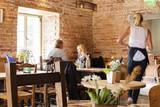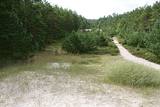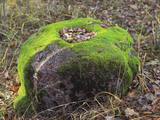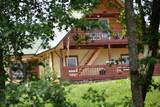| Nr | Nosaukums | Apraksts |
|---|---|---|
|
Ungru Resto ir piejūras restorāns Hījumā ziemeļu krastā, kur atmosfēru rada kādreizējā muitas māja, Suursadamas vide, kvalitātīvs ēdiens un apkalpošana. Ēdienkartē tiek izmantotas vietējie produkti un tiek gatavoti tradicionālie Hījumā salas ēdieni, pasniegti mūsdienīgā stilā. Restorāns Ungru Resto - iesaka White Guide 2018. |
||
|
Atrodas nepilnu kilometru ziemeļrietumos no Dvietes pie dabas parka “Dvietes palienes” robežas. “Apsītēs” dzīvojis un strādājis Latvijā pirmais vīnogu selekcionārs Pauls Sukatnieks (1914 - 1989). Šobrīd dzīvojamā ēka ir atjaunota, tajā apskatāmi sadzīves un citi lauku sētā lietojamie priekšmeti, kā arī P. Sukatnieka bibliotēka un darbistaba. Ap “Apsītēm” plešas labiekārtots dārzs, kurā apskatāmas gan vietējās, gan introducētās krāšņumaugu, krūmu un kokaugu sugas, t.sk. arī reti sastopamas. Apskatāmas un iepazīstamas P. Sukatnieka selekcionētās vīnogu šķirnes un vīnogu dārzs. Pie mājām izvietots informācijas stends par putnu vērošanu Dvietes palienēs. Interesenti var iepazīt gan dārzu, gan “Apsītes” vietējā gida pavadībā. Dārzā izveidota atpūtas un piknika vieta, tiek organizētas talkas un izglītojoši pasākumi. |
||
|
Amatnieks piedāvā stāstījumu par podniecības vēsturi, demonstrē amatu darbībā. Keramikas darbus var pasūtīt un iegādāties. Vienreiz gadā (jūlijā) kurina kambarkrāsni (t.s. naborigama), kas atrodas pie Salacgrīvas Mākslas skolas. |
||
|
Mājīgs restorāns, kura pavāri iedvesmojas no vietējās augu un dzīvnieku valsts, piedāvājot aizmirstas garšas jebkurā gadalaikā. Goda vietā ir gan vietējo, gan pasaules labāko meistaru produkti. Sezonu dažādo garšu un vīna brīnišķīgais salikums padara Umb Roht par restorānu, kas piedāvā dažādus garšu baudījumus. |
||
|
Rīgas – Daugavpils šosejas (A 6) malā (vietā, kur no Zemkopības institūta nogriežas ceļš uz Skrīveriem) redzama zema ieplaka ar Kraukļu akmeni, kas ir sena kulta vieta. Pie akmens veikti arheoloģiskie izrakumi, kuru laikā atrastas senlietas. Vecākā ir no 12. gadsimta. Akmens aprakstīts slavenajā Andreja Upīša (1877. – 1970.) darbā „Sūnu ciema zēni”. |
||
|
Restorāns "Goldingen Room" atrodas Kuldīgas vecpilsētas sirdī - Rātslaukumā. Tajā tiek piedāvāta Vidusjūras virtuve un tai pieskaņoti Itālijas un Francijas vīni, kā arī vietējie dzērieni. Maltīti iespējams baudīt arī āra terasē. |
||
|
Jēkabpils Vēstures muzeja izglītojošās programmas „Siera stāsts” ietvaros var iepazīties ar ikdienā lietojamo pārtikas produktu - sieru, kam ir tūkstošgadīga vēsture, noklausīties izzinošus stāstus par siera gatavošanas vēsturi un Krustpils pils īpašnieku – baronu Korfu siera lietošanas tradīcijām. Minimālais cilvēku skaits grupā – 10. |
||
|
Atrodas Iecavas upes ielokā starp Rīgas un Sporta ielu. Baznīcas celtniecību uzsāka 1641. g. un pabeidza ap 1657. g. Ēka ievērojami cieta 2. Pasaules kara laikā. Pie baznīcas atrodas kapi, kuros apglabāti grāfu Pālenu dzimtas pārstāvji. To ziemeļaustrumu stūrī redzama Pālenu dzimtas kapliča. Baznīca ir it kā „sadalīta” divās daļās – vienā daļā notiek restaurācijas darbi, otrā izvietota bibliotēka. To ir vērts redzēt arī no iekšpuses. |
||
|
Mazskarts Salacas upes ielejas posms ar lielu smilšakmens iežu atsegumu, netraucētu alu u.c. biotopu, sugu un ainavu daudzveidību. Salaca ir viena no nozīmīgākajām Baltijas jūras lašupēm un otra populārākā Vidzemes ūdenstūristu upe. Kā galvenie apmeklētāju piesaistes objekti jāmin ģeoloģiskie pieminekļi - Sarkanās klintis, Skaņais kalns, Neļķu klints, Velna ala un kultūras pieminekļi - Lībiešu pilskalns, Vecsalacas muiža, Lībiešu muzejs, Valtenberģu muiža, unikālie Salacas nēģu tači u.c. Parkā atrodas viens no Ziemeļvidzemes populārākajiem tūrisma objektiem – Skaņākalna parks, kurā izveidots blīvs taku tīkls. Salaca ir arī populārs makšķernieku galamērķis. Ietilpst Ziemeļvidzemes biosfēras rezervāta teritorijā. |
||
|
Atrodas Lielajā ielā 9. Dievnams celts 1742. - 1758. g. (J. K. Dorna projekts) pilsētas vācu draudzes vajadzībām, bet 55 m augstā torņa celtniecību pabeidza 1866. gadā. Baznīcas fasāde un interjers ir veidots vēlīnā baroka stilā ar klasicisma (interjerā – arī grezni rokoko stila elementi) iezīmēm. Dievnams pazīstams ar 1773. - 1780. g. būvētajām (H. A. Konciuss) ērģelēm. Pēc 1885. g. pārbūves instrumentam ir > 7000 stabuļu, 131 reģistrs un 4 manuāļi. Tas ir nominētas kā pasaulē lielākās mehāniskās ērģeles, kurās vērts ieklausīties koncertu laikā! Apmeklētāji var apskatīt baznīcu, ērģeles un uzkāpt tornī. |
||
|
Mājīgajā restorānā var nogaršot no lietuviešu dabas veltēm gatavotos ēdienus. Šeit var arī apbrīnot seno ēdienu gatavošanas darbarīku un šakoša cepšanas rīku ekspozīciju. Tiem, kas paši vēlas izcept tradicionālo šakoti, piedāvā pieteikt izglītojošo programmu „Šakoša paraugcepšana”. Maiznīca atrodas ~4 km attālumā no Druskininku pilsētas. Piedāvā nakšņošanu, konferenču telpas un kulinārā mantojuma programmas. |
||
|
Atrodas Lubāna dienvidu krastā pie dambja un Īdeņas kanāla, no kura var aplūkot „tipiskas” mitrāju ainavas – niedrājus, aplūstošus krūmājus, mitras pļavas, aizaugušo ezeru. |
||
|
Viena no 19. gs. sešdesmito gadu sākumā būvētās St. Pēterburgas – Varšavas dzelzceļa līnijas stacijām. Kaut arī sliežu ceļš joprojām turpinās Baltkrievijas virzienā (tālāk – pamests), Marcinkones dzelzceļa stacija ir pēdējā, līdz kurai pasažieri var nokļūt ar vilcienu no Viļņas (3 reizes dienā). Arī kravas vilcieni tālāk nekursē. Stacijas ēka ir izcils koka arhitektūras un stacijas kompleksa apsaimniekošanas piemērs. No Marcinkones dzelzceļa stacijas virzienā uz Čepkeļu purvu savulaik ir bijis izveidots šaursliežu dzelzceļš, kuru izmantoja kokmateriālu izvešanai. Tā vietā šobrīd ir saglabājies vecs meža ceļš, kur plānots izvietot šaursliežu dzelzceļu tematikai veltītu informācijas stendu. |
||
|
Atrodas Riekstusalas pussalas galā. No tā labi pārskatāma aizaugušā Kaņiera ezera ziemeļu un austrumu daļa. Izcila putnu vērošanas vieta. Pie torņa atrodas viena no retajām Latvijas kadiķu audzēm. Turpat meklējams Kaņiera ezera niedru laipas (uz pontoniem) sākums. |
||
|
Auto stāvlaukumā pie Kolkas raga priežu takas sākuma
acīgāks vērotājs pamanīs mūsdienās aizaugošu plašu stigu, kuras viens
gals beidzas jūras krastā, otrs – pie Kolkas – Ventspils ceļa. Šī vieta
padomju laikā tika izmantota militāriem mērķiem – šaušanas
apmācībām.
|
||
|
Atrodas vecpilsētas centrā, Latgales ielas un Baznīcas ielas krustojumā. Dievnamu cēla laikā no 1843.–1845. g. krievu klasicisma stilā. Nesen atjaunoti tā griestu un sienu gleznojumi. Tornī atrodas 1667 kg smags zvans. Iepriekš piesakoties, baznīcu var apskatīt arī no iekšpuses. |
||
|
Zīleņu upurakmens. Zelenpoles Zelta kalniņā, pie stāvas nogāzes,
apskatāms akmens ar gredzenveida iedobi vidū – Zīleņu upurakmens.
Te bija sena latgaļu kulta vieta, kur nesuši upurus dieviem, attīrījušies
no ļauna un smēlušies gaišo enerģiju.
|
||
|
Mājražošanas uzņēmums no Jaunjelgavas novada Seces pagasta. Savu hobiju (kūpināšanu) uzņēmuma saimnieks ar pieredzi papildinājis vairāku gadu garumā, taču plašākam pircēju pulkam produkcijas klāsts piedāvāts no 2013. gada. Uzņēmumā tiek kūpinātas lielākoties tikai Latvijā audzētas zivis, ar tradicionālām metodēm, izmantojot alkšņu malku, nepievienojot e-vielas. Piedāvājumā ietilpst arī kūpināta vistas gaļa, jūras asari, kā arī citi kūpinājumi. |
||
|
Ekskursijas sākumā apmeklējiet Enerģētikas muzeja ekspozīciju Pļaviņu hidroelektrostacijā, kur iespējams iepazīties ar unikālās būves un lielākās elektroenerģijas ražotnes Baltijā celtniecības vēsturi un darbības nozīmīgākajiem notikumiem. Pēc tam apmeklējiet Skrīveru pārtikas kombinātu, kurā iespējams iegādāties gardās konfektes un doties ekskursijā. Tālāk - Skrīveru mājas saldējums ar stāstījumu par saldējuma gatavošanu un degustācija. Brauciena noslēgumā dodieties uz savvaļas dzīvnieku dārzu, kur dzīvo ~ 50 dambrieži un Skotijas savvaļas govis. |
||
|
Tūristu nometne, smailīšu noma laivošanai pa Šventosios (Svēto) upi un tās pietekām Vyžuonos, Jaros upēm. Piedāvājumā 4 atsevišķas atpūtas vietas ar teltīm, kurās pieejamas dārza mēbeles, vieta grillēšanai, iesmi, pirts upes krastā, āra tualete, mazgāšanās telpa, bērnu rotaļu, volejbola un futbola laukumi. Lielajā dārzā iespējams uzņemt līdz 50 cilvēkiem. Vieta svinībām, festivālu rīkošanai, sanāksmēm un semināriem. Vienā no mājām ir pirts, kā arī divas Krievu prirtis un kubls upes krastā. Piedāvājumā ēdienu pēc iepriekšēja pieprasījuma. |
||





















